Wireless communication might seem mysterious, but it’s built on a few simple ideas. In this post, I’ll break down one of its core concepts—modulation—using a simple water-wave analogy. Whether you’re new to the topic or just curious, this guide will show you how your messages travel through the air. And if you want even more detail, check out my video below!
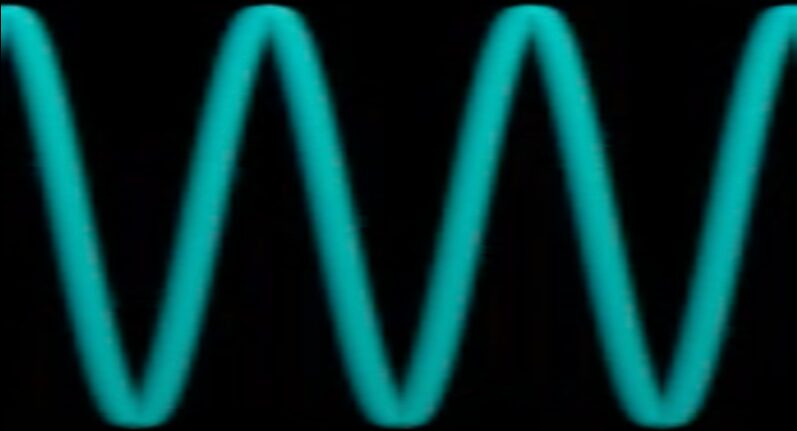 Wireless WAVES are similar to Water WAVES 🌊
Wireless WAVES are similar to Water WAVES 🌊
Wireless communication is all about sending messages through the air using invisible electromagnetic waves. One way to visualize this is to think of electromagnetic waves like waves on a calm lake. Just as water ripples can carry a disturbance across a pond, radio waves carry your voice or data from one point to another. In our analogy, the water waves will represent the electromagnetic waves carrying the message.
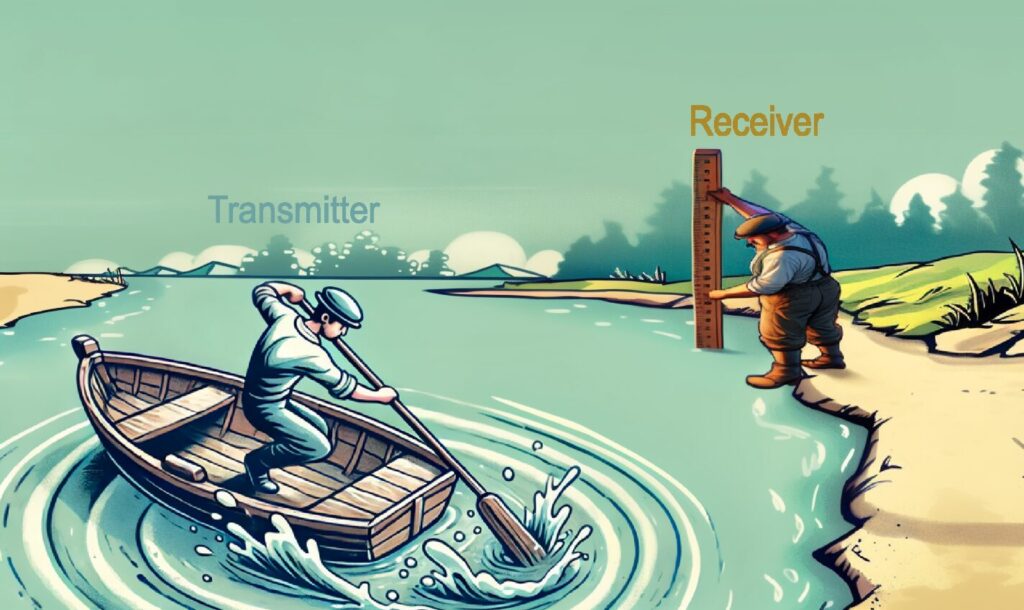
Imagine a man in a boat using his oar to create ripples on the water, and another person on the shore watching those ripples. In this story, the boatman is the transmitter and the person on the shore is the receiver. The boatman’s oar makes waves in the water (like sending a signal), and the observer on shore reads the pattern of those waves to understand the message.
But how can the boatman change those waves to send different messages (not just random splashes)? The answer is modulation. Modulation is the act of shaping the waves so they carry specific information to someone waiting on the shore. In other words, it’s how the boatman tweaks the water ripples to encode a message.

 The “Oar Shaper” Trick: Tweaking Water Waves to Send a Message
The “Oar Shaper” Trick: Tweaking Water Waves to Send a Message
Now that our boatman knows he needs to modulate the waves, how can he actually do it? There are three main “tricks” he can use with his oar to shape the waves, each corresponding to a different property of the wave:
- Wave Height (Amplitude): He can row harder to create tall, splashy waves or row gently to make small, gentle ripples. Changing the wave’s height is like adjusting the amplitude (strength) of a signal.
- Wave Start (Phase): He can adjust when each wave begins by timing his oar strokes differently. This is similar to shifting the phase of a wave — essentially, changing the starting point of each wave cycle.
- Wave Speed (Frequency): He can paddle faster or slower, which changes how frequently the waves reach the shore. Speeding up the strokes means waves come in quicker succession (higher frequency), while slowing down means they come less often (lower frequency). This corresponds to changing the frequency (or rhythm) of the signal.
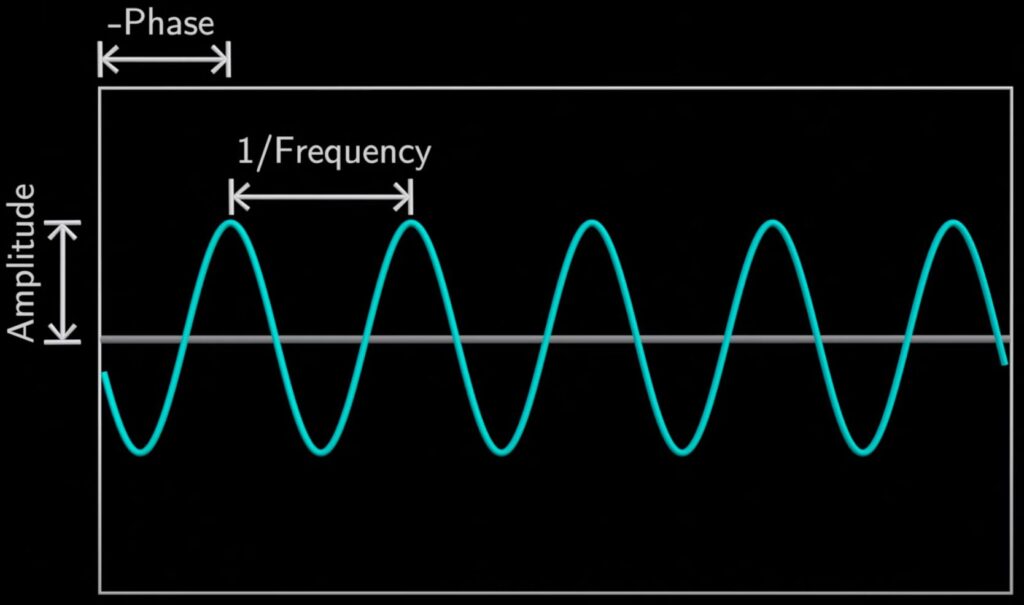
With these three controls at his disposal (amplitude, phase, and frequency), our boatman can shape the water waves in various ways to encode a message. But what kind of message is he actually sending? In communication systems, information generally comes in two formats: analog and digital.
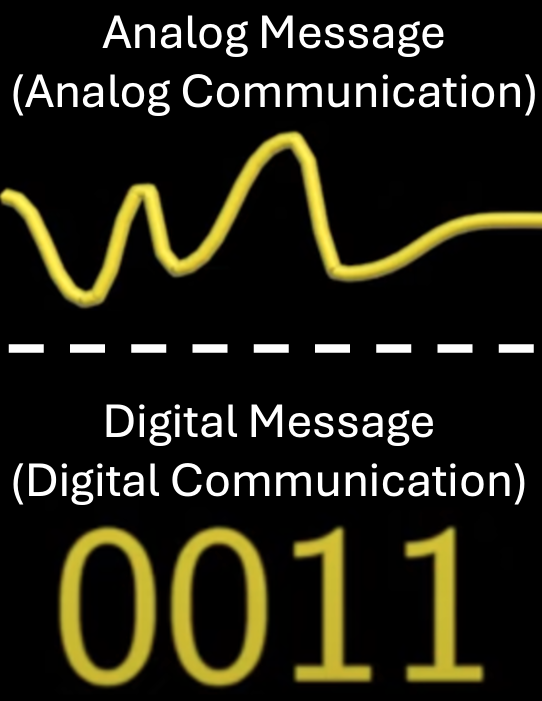
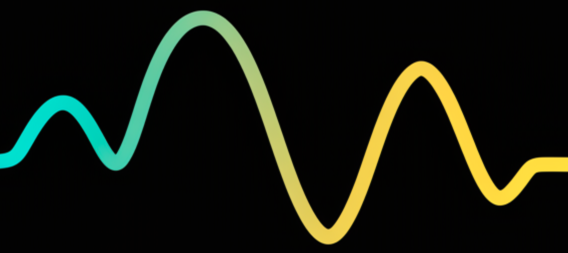 Analog Message – Smooth & Continuous
Analog Message – Smooth & Continuous
Analog messages vary smoothly, like a gentle wave that rises and falls without sudden changes. They change gradually with no abrupt jumps—imagine a ramp that slopes up and down instead of a staircase. For example, your voice is analog: when you speak, your tone and volume glide up and down seamlessly, much like a smoothly rippling wave.
Other examples of analog information include:
- A clock with hands that move continuously rather than jumping
- A dimmer light switch that increases or decreases brightness smoothly
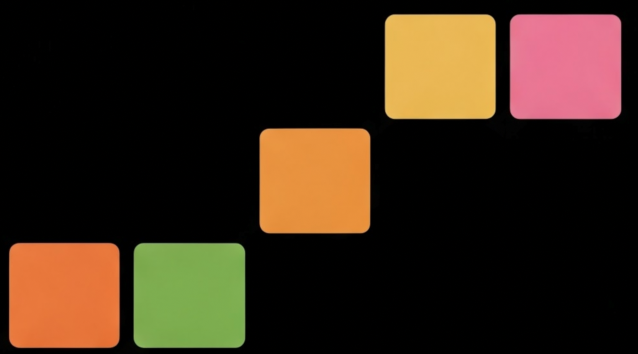 Digital Message – Clear & Stepped
Digital Message – Clear & Stepped
Digital messages, on the other hand, look more like a staircase of discrete steps. Instead of smooth transitions, the signal jumps clearly from one level to the next with no in-between states. For example, when you send a text message, your phone encodes your message as a sequence of 0s and 1s.
Other examples of digital information include:
- A digital clock that jumps from one minute to the next
- A light switch that is either ON or OFF (no states in between)
If information is in analog form, we call it analog communication. If it’s turned into 0s and 1s, it’s called digital communication. Either way—analog or digital—the message now needs to hitch a ride on a wave to travel to its destination. This is where the transmitter (our boatman) actually encodes the message onto a carrier wave using modulation.
📻 Encoding the Message: Water Wave Radio!
Now it’s time to put the message onto a wave and send it out, like broadcasting on a “water wave radio.” Returning to our boatman analogy: he will use his oar techniques to encode the message (whether analog or digital) into the water waves and send it across the lake. In real life, this is exactly what a transmitter does with electromagnetic waves. Here are the common modulation methods used:
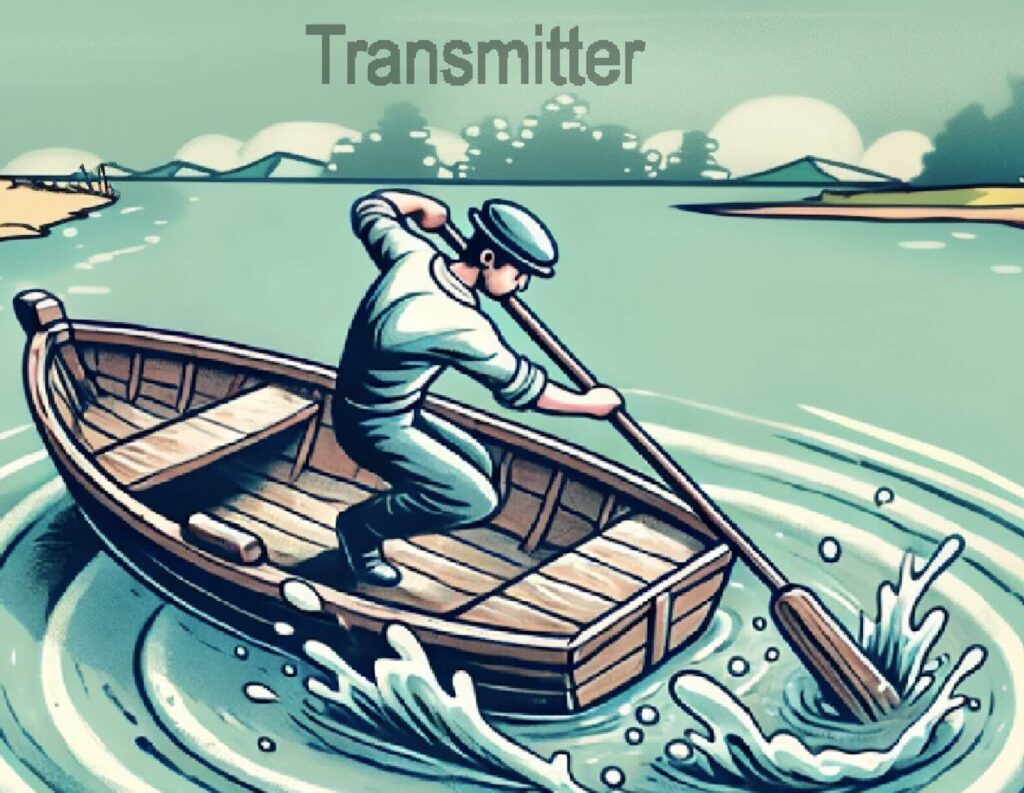
For Analog Communication:
- AM (Amplitude Modulation): The transmitter varies the wave’s amplitude (height) to match the analog message. (In our analogy, the boatman makes bigger waves for stronger parts of the signal and smaller waves for weaker parts.)
- PM (Phase Modulation): The transmitter shifts the phase of the wave to encode the information. (In the analogy, the boatman might start each wave a bit earlier or later to embed the message in the timing of the waves.)
- FM (Frequency Modulation): The transmitter changes the frequency (rate) of the waves to carry the message. (Equivalently, the boatman rows faster or slower, so waves arrive more frequently for some parts of the message and less frequently for others.)
(If those acronyms like AM and FM sound familiar, yes — think AM radio and FM radio! Those names come directly from Amplitude Modulation and Frequency Modulation.)
For Digital Communication:
- ASK (Amplitude Shift Keying): The wave switches between two amplitudes to represent binary data. For example, a tall wave might represent a “1” and a small wave a “0”. (It’s like the boatman using a big splash for a binary 1 and a tiny ripple for a 0.)
- PSK (Phase Shift Keying): The wave’s phase (start position) is shifted in one of two ways to represent 0 or 1. (In other words, the boatman starts a wave at two different points in its cycle to distinguish between a 0-bit and a 1-bit.)
- FSK (Frequency Shift Keying): The wave switches between two frequencies for the binary states. For instance, a fast wave pattern could mean “1” and a slow wave pattern could mean “0”. (The boatman might splash quickly to signal a 1 and paddle slowly to signal a 0.)
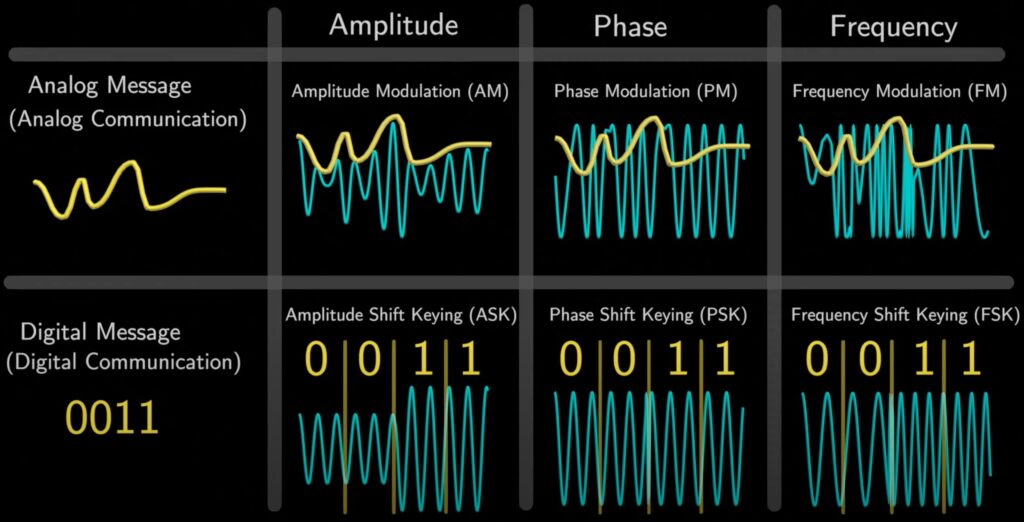
The diagram above summarizes analog and digital modulation. The top row (yellow wave) is an analog message smoothly modifying a carrier wave’s amplitude, phase, or frequency (blue wave) – this is how AM, PM, and FM carry analog signals. The bottom row shows a digital message (“0011”) being sent by switching the carrier wave between two states for each property: two amplitudes for ASK, two phase shifts for PSK, and two frequencies for FSK. In each case, the boatman’s wave shaping tricks are translating information into the water waves.
QAM: The Ultimate Wave-Shaping Technique for Maximum Message Density
Among all these methods, one technique stands out for packing extra data into each wave: QAM. QAM (Quadrature Amplitude Modulation) is like doing ASK and PSK at the same time – the transmitter modulates both the amplitude and the phase of the wave simultaneously. Imagine our boatman now controls not just how tall the wave is, but also exactly when each wave starts. By combining those two tweaks, he can encode much more information in every single wave ripple.
Why go through this trouble? Because the wireless spectrum is limited—like a lake with only so much water. We have only a fixed range of frequencies (the “airwaves”) available for communication, and everyone (cell phones, Wi-Fi, radios, etc.) has to share it. Companies pay billions for slices of this spectrum, so it’s crucial to make every bit of it count. QAM addresses this by packing more bits into each transmission, making communication far more efficient. In fact, QAM is used in most modern systems (like Wi-Fi, 4G, and 5G) to send huge amounts of data quickly. Each wave carries multiple bits at once, thanks to that dual control of amplitude and phase, which means faster data rate for your phone.
🗣️ Even “Voice Waves” Go Digital!
You might be thinking: what about something like your voice, which is naturally analog? It turns out that even when you speak into a phone, your voice gets turned into digital waves before being transmitted. Modern phones and networks convert voice audio into digital signals to take advantage of all the benefits of digital modulation.
Here’s what happens when you make a call on your mobile phone:
- Capture & Digitize: Your phone’s microphone captures your voice (an analog sound wave) and immediately converts it into a stream of digital bits (a sequence of 0s and 1s).
- Modulate (QAM): The phone then uses a modulation technique (often QAM, as discussed) to shape a radio wave, encoding those 0s and 1s into the wave’s amplitude and phase.
- Transmit the Wave: Finally, the phone’s antenna sends out this modulated radio wave, which propagates through the air just like ripples across a lake, carrying your digitized voice to the nearest cell tower (and eventually to your friend on the other end).
In essence, instead of directly sending your voice as an analog wave (like shouting across the lake), your phone writes your voice in binary and then sends that data out as a modulated wave.
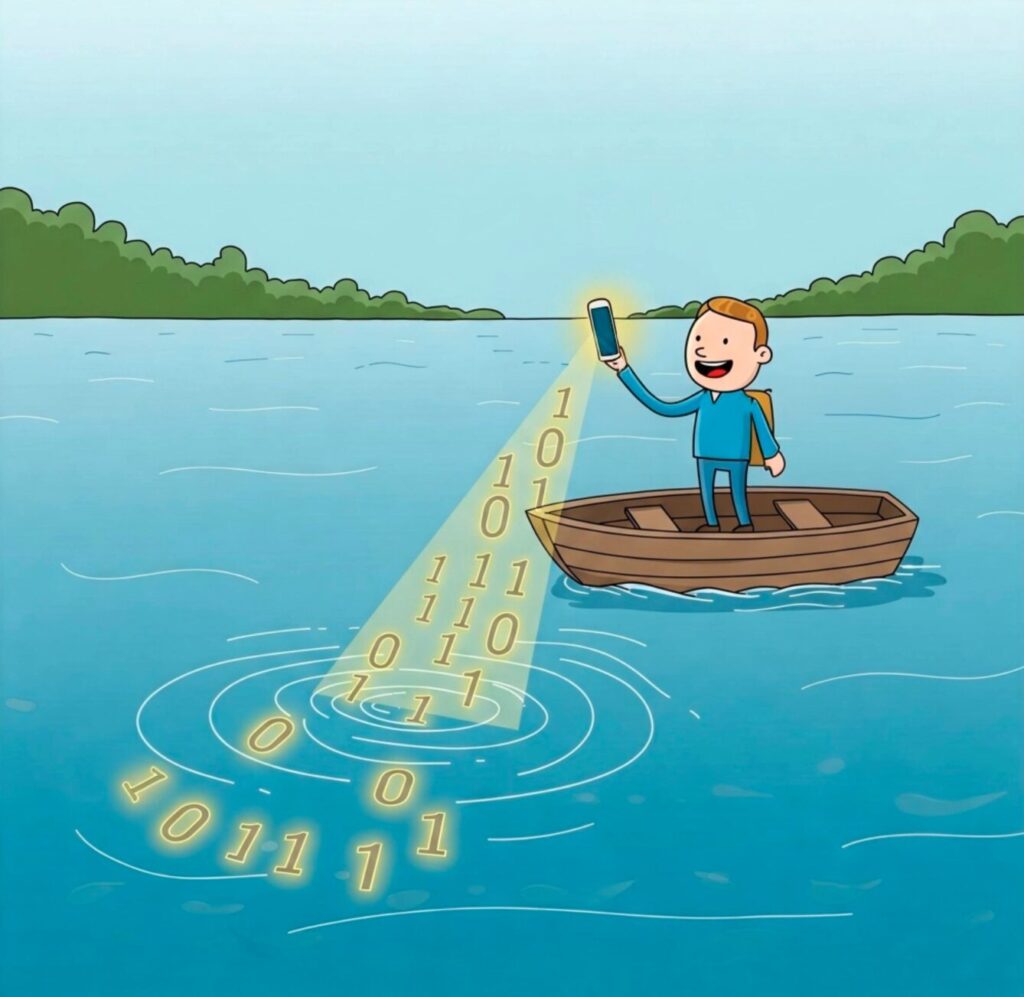
🧐 Why Wave Shaping Matters?
Why does all this wave-shaping matter? Because our wireless “lake” is a shared, limited resource. The cartoon here shows multiple transmitters (cell towers) and receivers (phones) all using the same lake at once. Without smart modulation, their waves would clash and interfere. With clever wave shaping, however, each device can send and receive its own signals clearly, even in a crowded pond of signals.
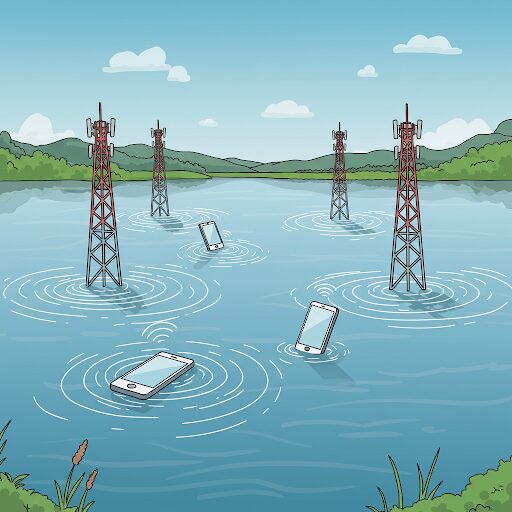
To sum up, modulation is important in wireless communication for several reasons:
- Turning Waves into Information: Modulation (wave shaping) is what turns raw radio energy into meaningful signals. It transforms unmodulated electromagnetic waves into carriers of information. Without modulation, a radio wave would just be an empty ripple with nothing useful on it.
- More Data per Wave: Advanced digital modulation techniques (especially QAM) squeeze more bits into each wave. This means more information can be sent in the same amount of time.
- Sharing the Spectrum: Smart modulation allows many users and devices to share the same limited spectrum without interfering with each other. It’s like having many boatmen on the same lake, each sending out waves with their own messages, and none of the messages getting lost. By giving each wave a distinctive pattern, receivers can pick out their intended signal from the crowd.
So, the next time you send a text message on your phone, remember the little “wave dance” happening behind the scenes. Your phone and the network are busy shaping electromagnetic waves—tall or short, early or late, fast or slow—so that your message can zip across thin air and arrive clear and intact on the other side. 📶🌊

Leave a Reply